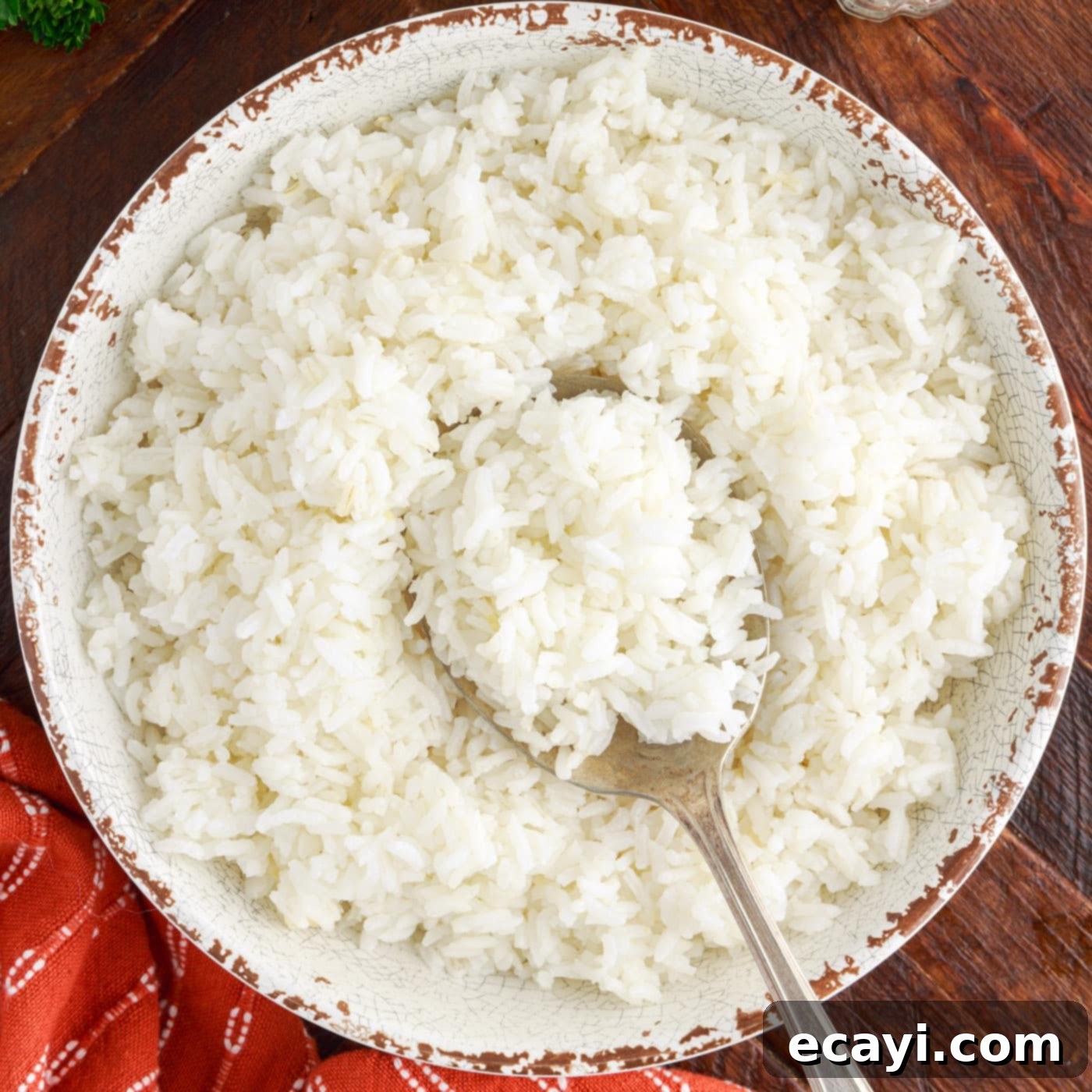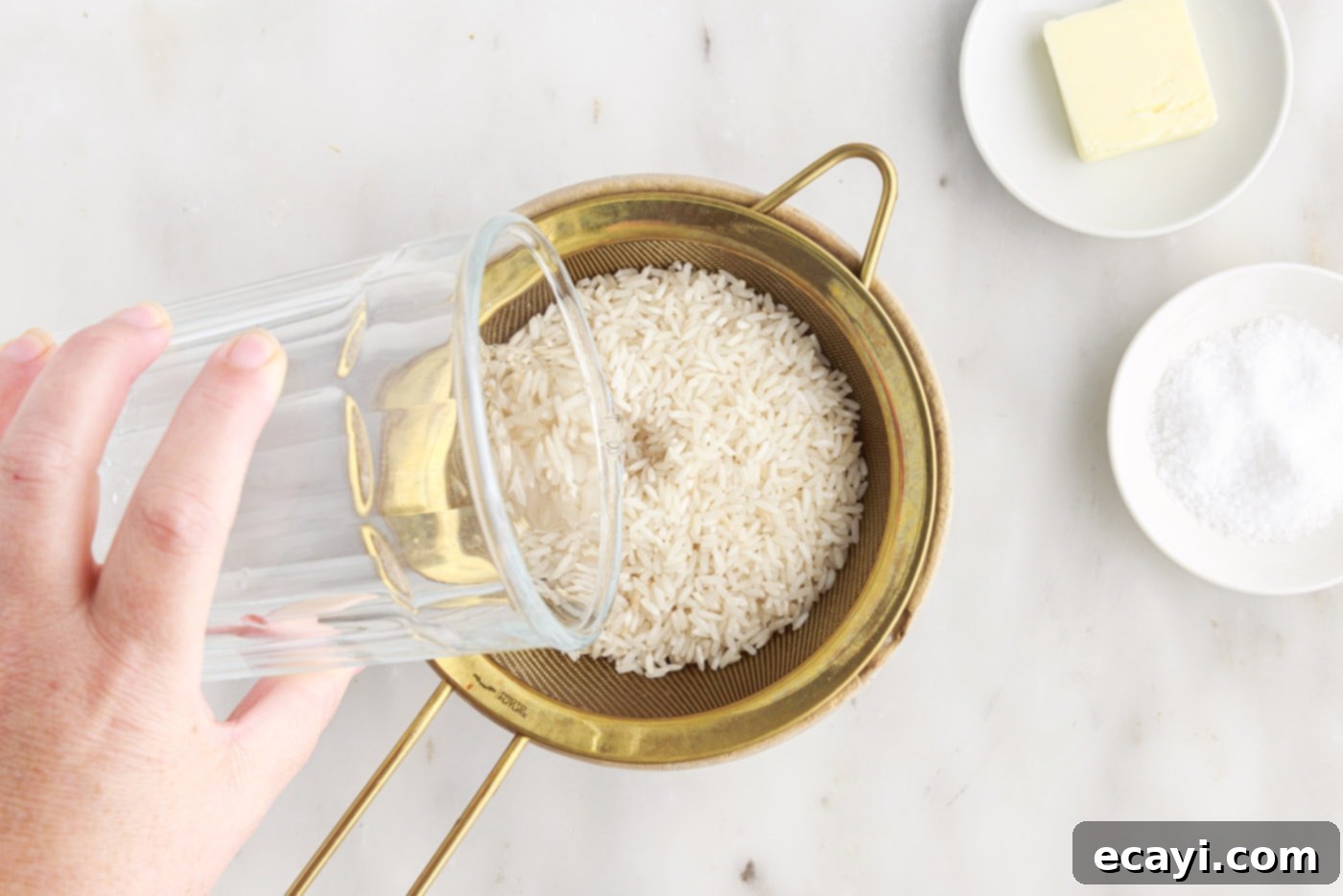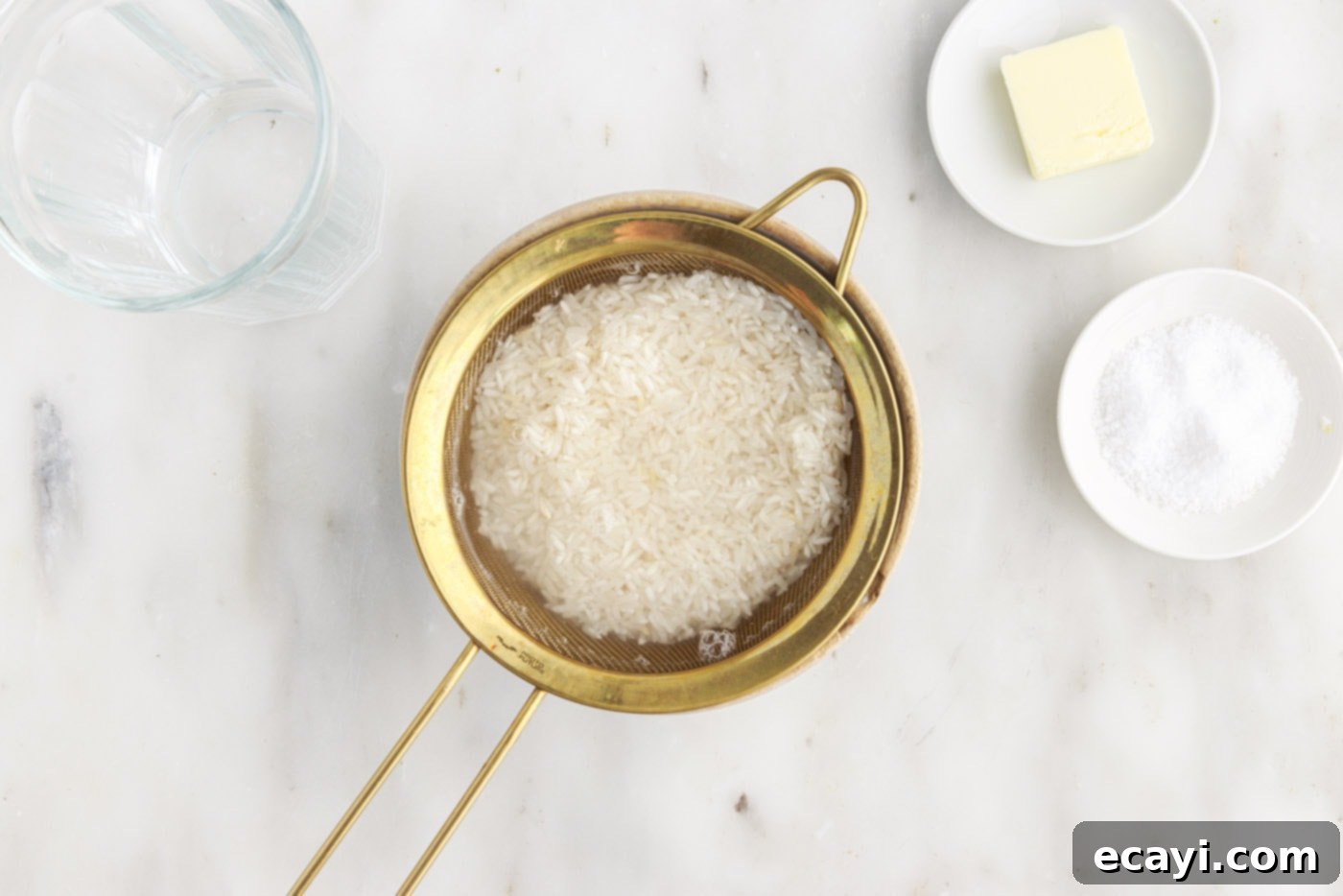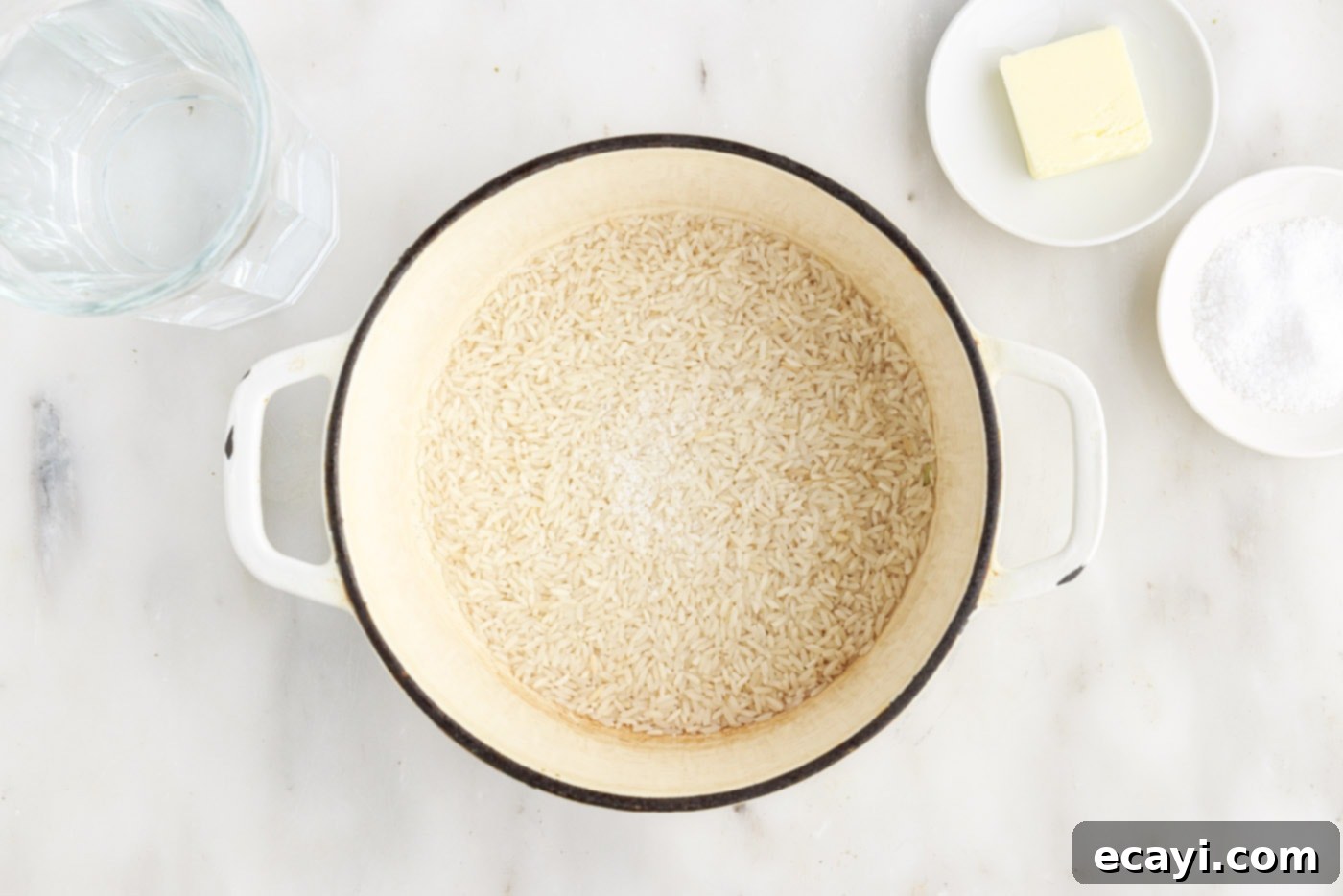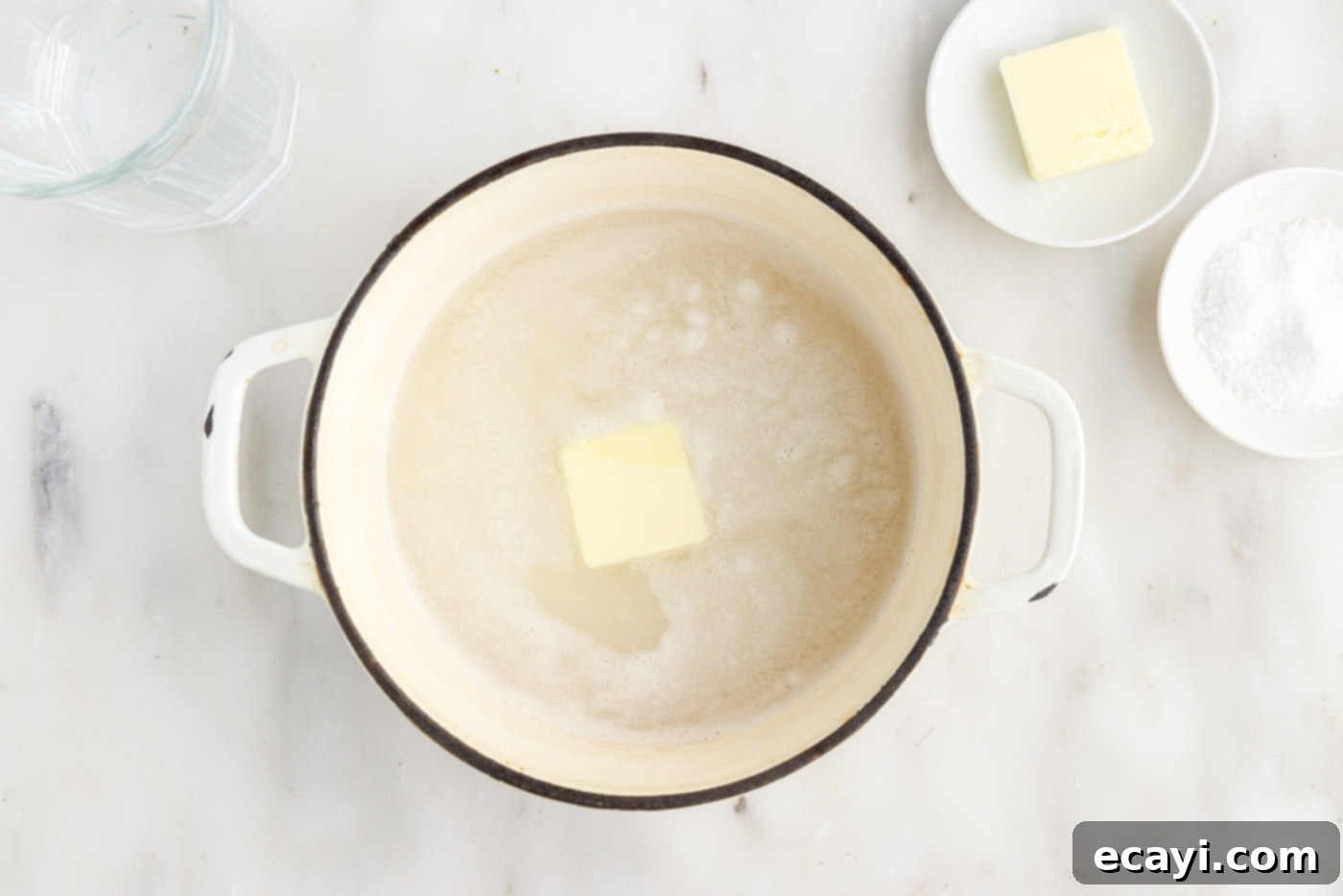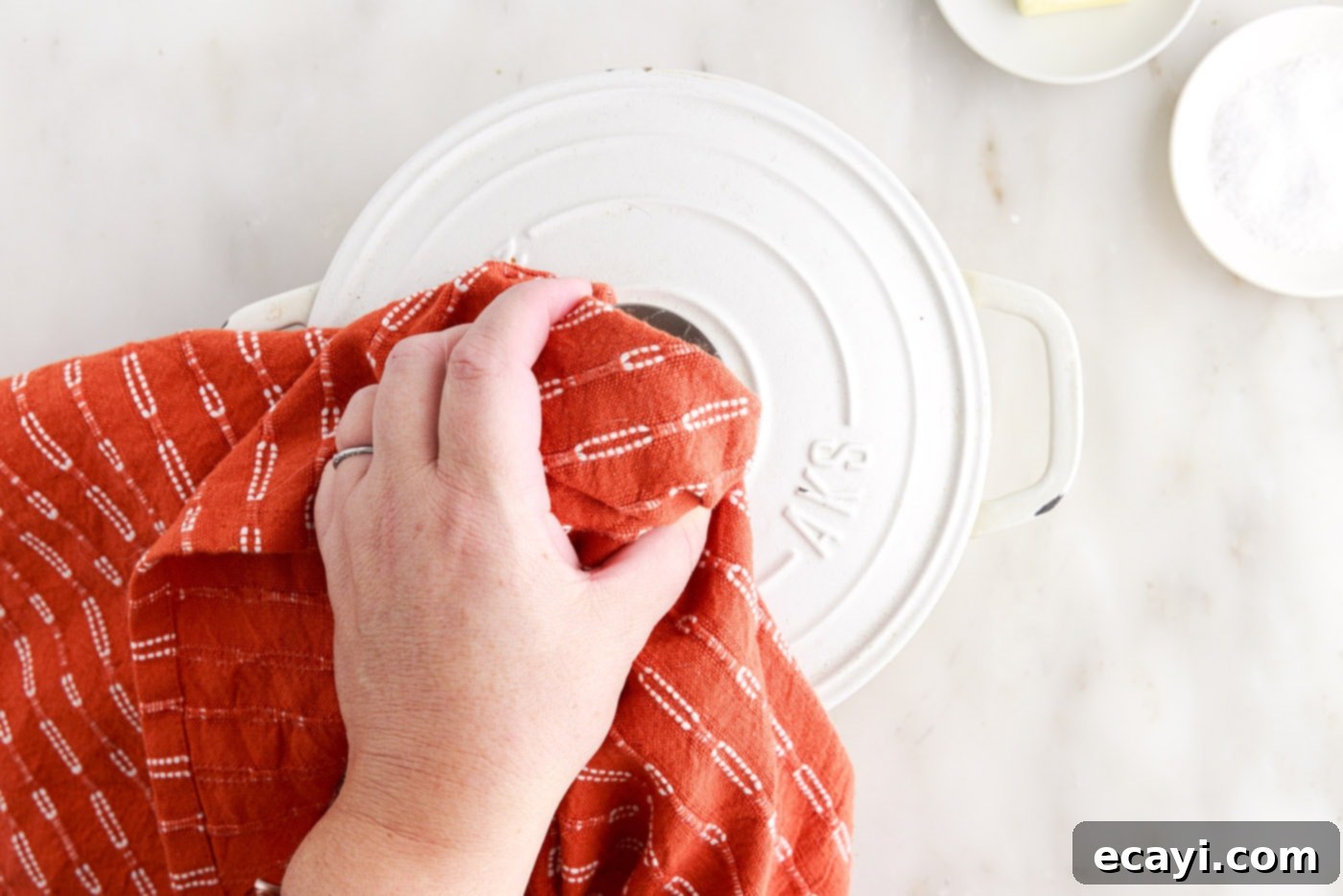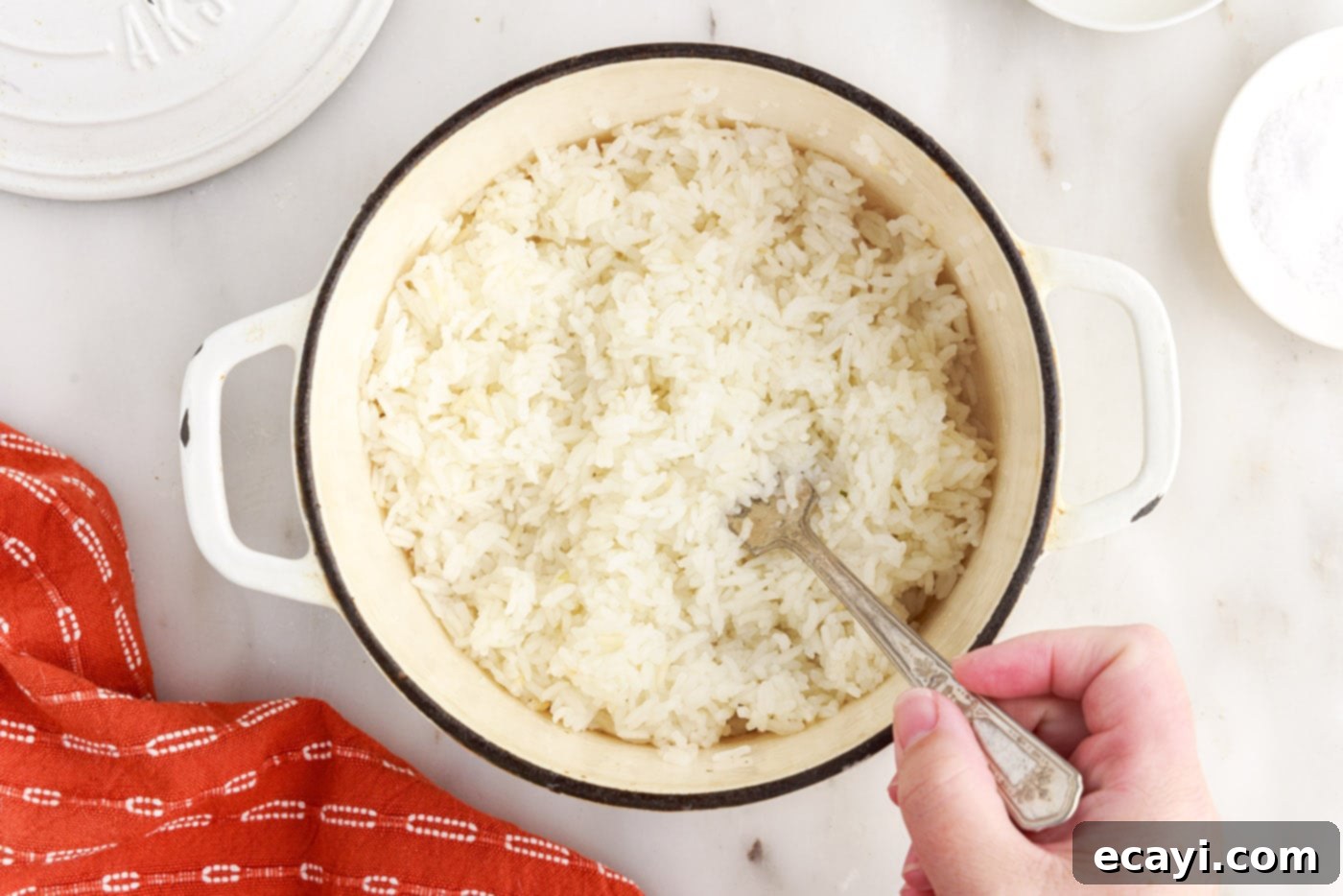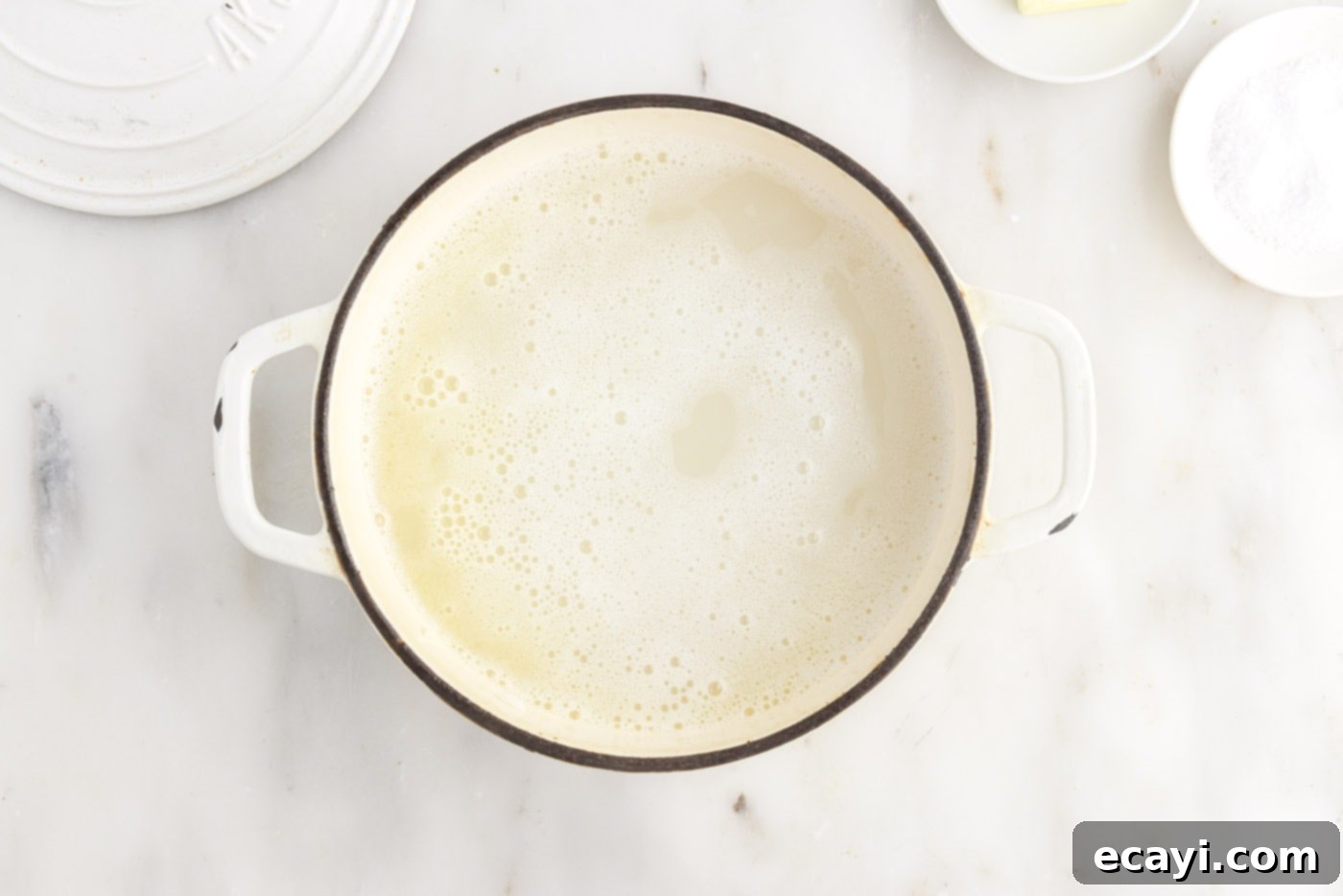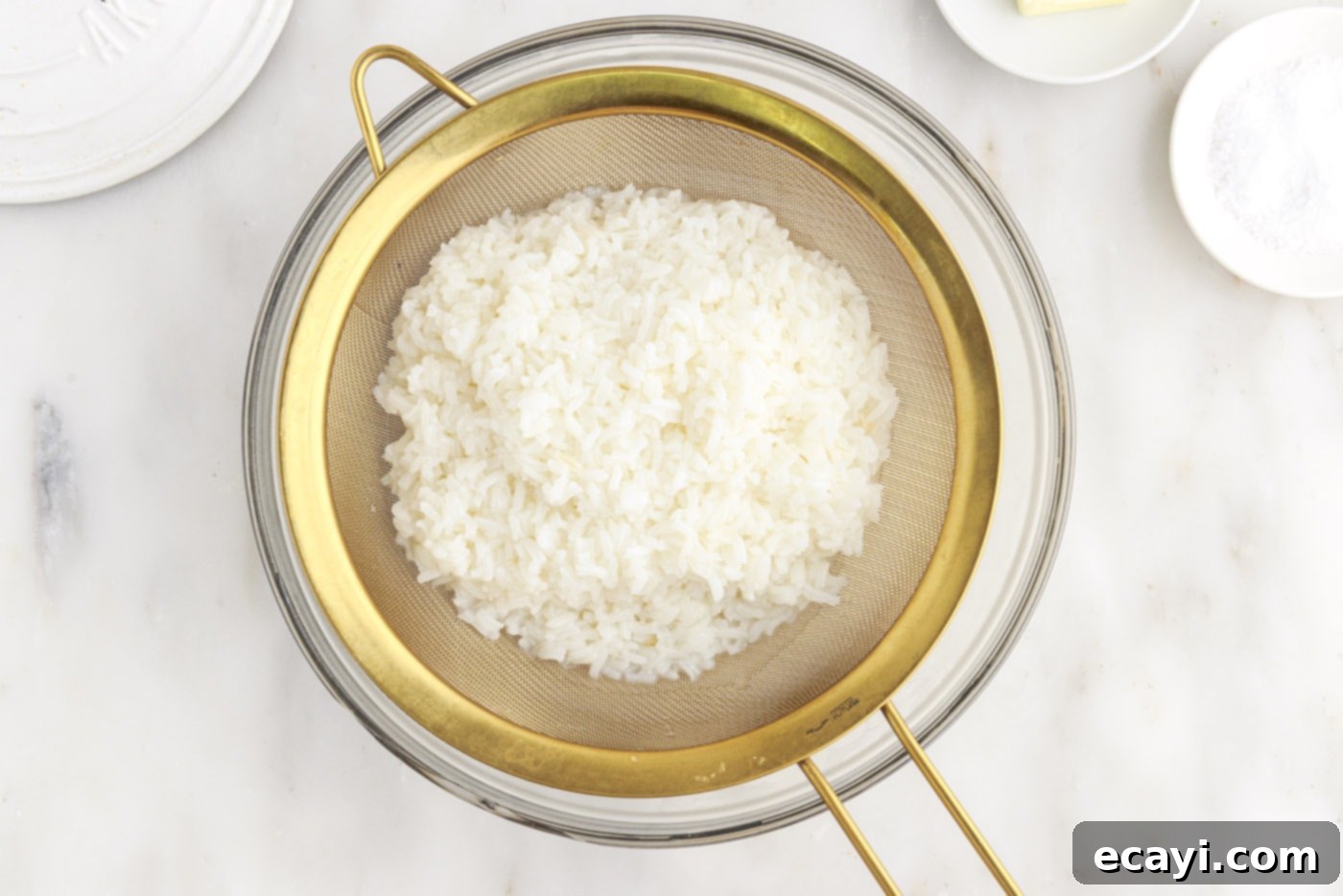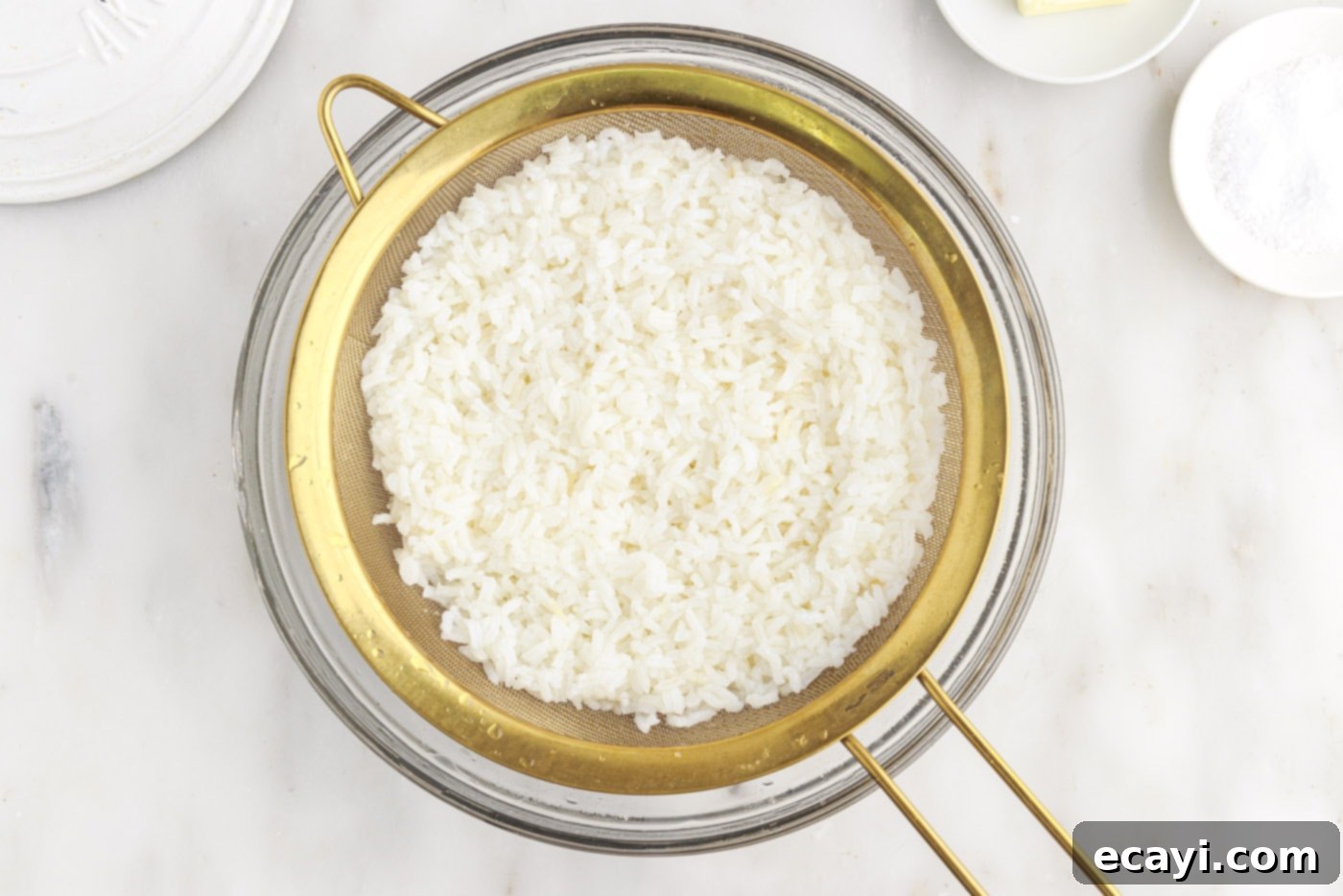Mastering Fluffy Stovetop Rice: Two Easy, Foolproof Methods for Perfect Results Every Time
Achieving perfectly cooked, fluffy rice shouldn’t be a kitchen mystery. For many home cooks, rice can be a source of frustration – sticky, mushy, or burnt to the bottom of the pan. But with the right techniques, you can become a pro rice maker without needing any fancy equipment. This comprehensive guide will show you two simple, foolproof methods for cooking long-grain white rice on your stovetop: the classic steaming method and the innovative pasta method. By understanding these approaches and incorporating a few essential tips, you’ll consistently produce delicious, tender, and separated grains that are ideal for any meal.
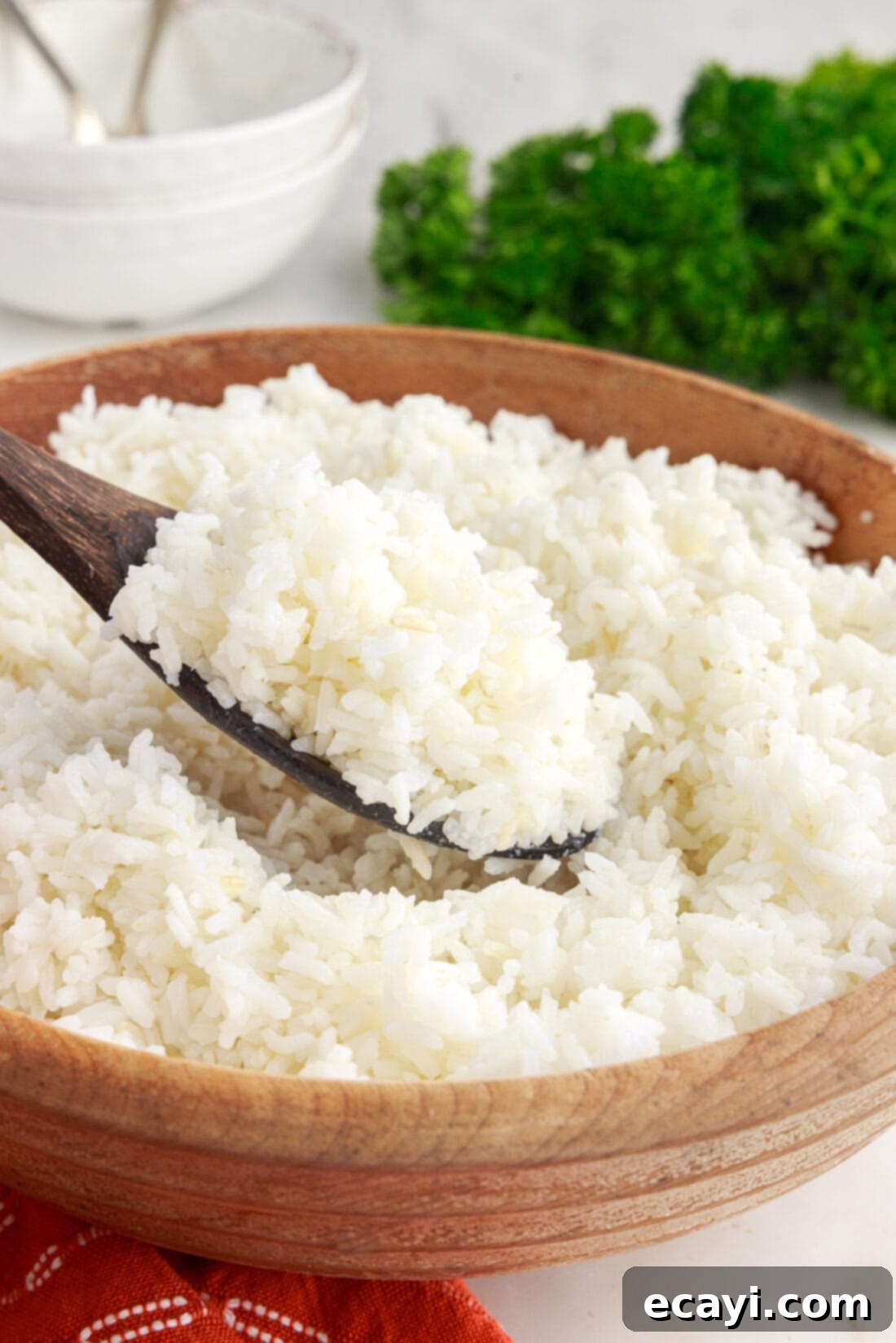
Why These Stovetop Rice Methods Work
We’re diving deep into two distinct methods for cooking long-grain white rice that guarantee exceptional results: the traditional steaming method and the less conventional, yet highly effective, pasta method. Both approaches are designed to eliminate common cooking issues, ensuring your rice is consistently fluffy, perfectly cooked, and free from undesirable stickiness or scorching.
The **Steaming Method** relies on a precise water-to-rice ratio and a gentle, consistent heat. By allowing the rice to absorb all the liquid and then rest, the grains cook evenly in their own steam, resulting in a tender texture with distinct separation. This method is classic for a reason – it provides consistent results when followed correctly, making it a staple for home cooks worldwide.
The **Pasta Method**, on the other hand, treats rice much like pasta. It involves cooking the rice in a generous amount of boiling water, then draining the excess liquid. This method is incredibly forgiving with water measurements and is particularly effective at washing away excess starch, which is a common culprit for sticky rice. It’s an excellent option for those who struggle with precise ratios or prefer a more hands-off boiling process before the final rinse. Regardless of which method you choose, you’ll be able to create versatile, delicious rice that complements a wide array of dishes, from flavorful honey walnut shrimp to savory garlic chicken. Having a reliable rice recipe in your culinary repertoire is truly invaluable!
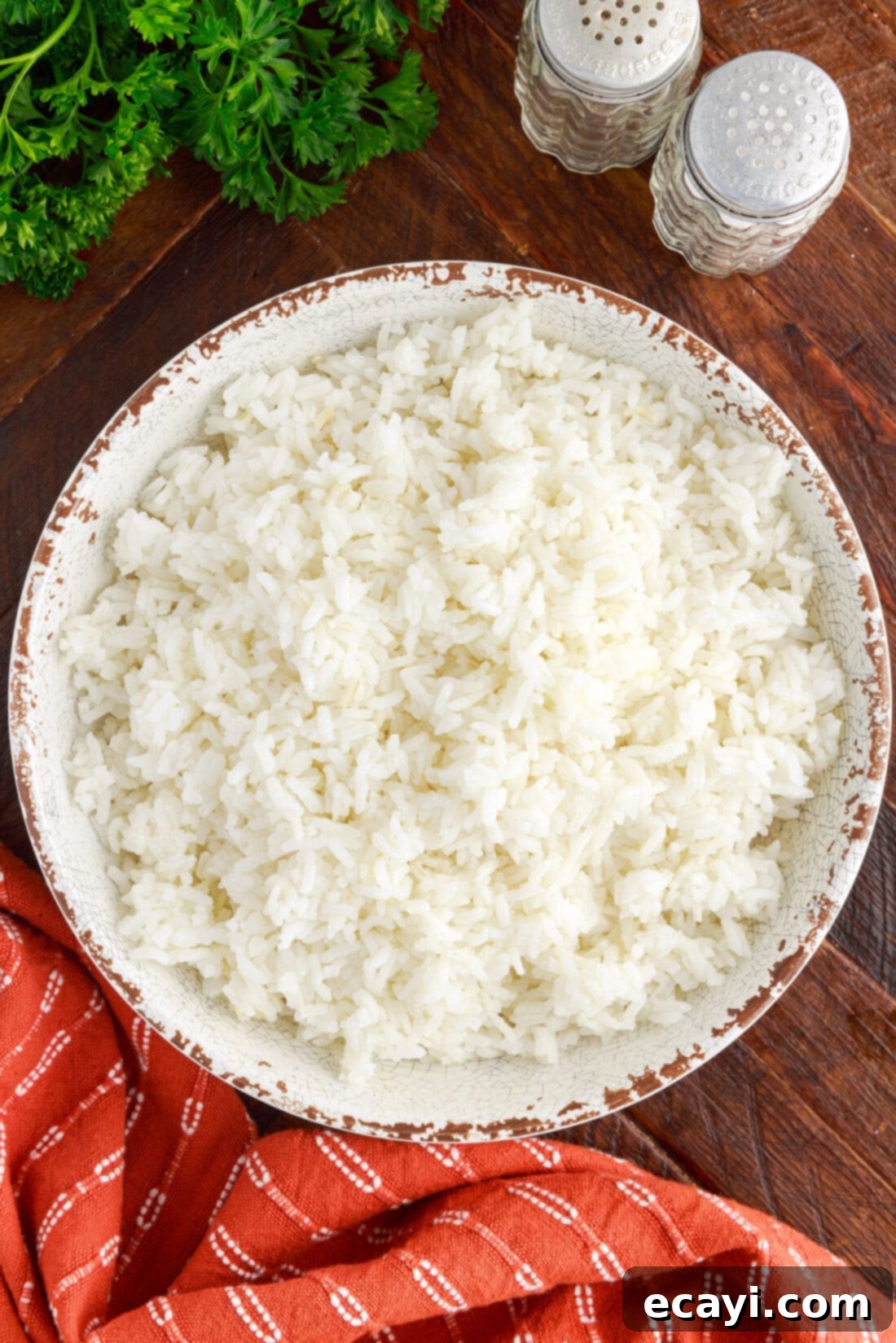
Essential Ingredients for Stovetop Rice
For detailed measurements, a printable recipe card, and complete instructions, please refer to the end of this post. While the ingredient list is minimal, understanding each component ensures the best possible outcome for your stovetop rice.
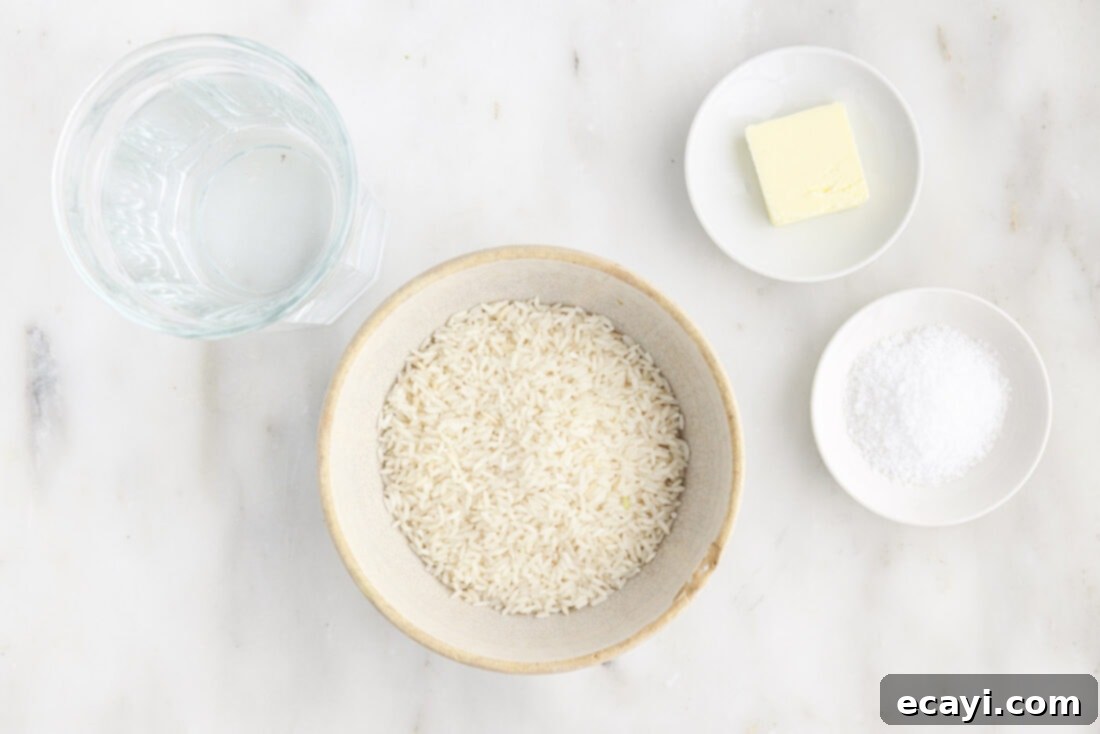
Ingredient Info and Substitution Suggestions
- RICE: This recipe is specifically designed for long-grain white rice. Varieties such as Jasmine or Basmati are excellent choices due to their aromatic qualities and ability to cook into separate, fluffy grains. It’s crucial to note that water amounts and cook times will significantly vary for other types of rice, such as short-grain rice (which is stickier, ideal for sushi) or brown rice (which requires more water and a longer cooking time due to its bran layer). For this recipe, stick to long-grain white rice for optimal results.
- WATER: The quality of your water can subtly affect the taste of your rice. Use filtered water if your tap water has a strong taste. For the steaming method, the exact ratio is important; for the pasta method, you’ll use a more generous amount, similar to boiling pasta.
- SALT: A small pinch of salt is essential for seasoning the rice and enhancing its natural flavor. You can adjust the amount to your personal preference, adding more at the end if desired.
- BUTTER (Optional): Adding a tablespoon of salted butter (or unsalted butter with a bit more salt) to your rice as it cooks or after it’s fluffed adds a wonderful richness, a slight sheen, and helps keep the grains separate. You can substitute butter with a neutral oil like olive oil, canola oil, or coconut oil for a dairy-free option. Some prefer to omit fats entirely, which is also fine.
How to Make Stovetop Rice: Step-by-Step Instructions
These step-by-step photos and instructions are here to help you visualize how to make this recipe. You can Jump to Recipe to get the printable version of this recipe, complete with measurements and instructions at the bottom.
Making Rice with the Steaming Method
The steaming method is a time-honored way to cook rice, yielding tender, separate grains by allowing the rice to absorb all the cooking liquid and then gently steam to perfection. Precision in water measurement and heat control are key for this technique.
- Rinse the Rice Thoroughly: Place the long-grain white rice in a fine mesh sieve. Rinse it under cold running water, swirling the rice gently with your hand, until the water runs completely clear. This step is crucial for removing excess surface starch, which is responsible for making rice sticky or gummy. Drain well.


- Combine Ingredients in a Saucepan: Transfer the rinsed and drained rice to a medium saucepan with a tight-fitting lid. Add the measured water (typically 1.5 cups of water for every 1 cup of rice), a pinch of salt, and the optional butter. Ensure the saucepan is appropriately sized to prevent boil-overs, allowing enough space for the rice to expand.


- Bring to a Low Boil: Place the saucepan over high heat and bring the water and rice to a low, gentle boil. Watch carefully, as this happens quickly. As soon as you see bubbles breaking the surface and the rice beginning to simmer, move to the next step.

- Reduce Heat and Simmer: Immediately reduce the heat to the lowest setting on your stovetop. Place the lid tightly on the pot, ensuring no steam escapes. Simmer the rice for 15 minutes. It’s crucial not to lift the lid during this time, as escaping steam will disrupt the cooking process.
- Check for Absorption: After 15 minutes, gently lift the lid to check if all the liquid has been absorbed. You should see small indentations or “craters” on the surface of the rice. If there is still water visible, re-cover and simmer for an additional 1-2 minutes until the water is fully absorbed and the rice is tender. Ensure your burner is truly on its lowest setting to prevent scorching.
- Rest and Steam: Once the water is absorbed, turn off the heat completely. Keep the lid on the pot and let the rice rest for an additional 10 minutes. This resting period allows the rice to finish steaming, distributing moisture evenly and ensuring every grain is perfectly cooked and fluffy. Do not skip this step!
- Fluff and Serve: Remove the lid and use a fork to gently fluff the rice. This separates the grains and releases any remaining steam. Your perfectly cooked, fluffy stovetop rice is now ready to serve!

Making Rice with the Pasta Method
The pasta method is a highly forgiving way to cook rice, especially if you prefer not to worry about precise water ratios. It’s excellent for achieving extra-fluffy, non-sticky rice by boiling it in abundant water, then rinsing away excess starch.
- Prepare Rice in a Large Pot: Place the long-grain white rice and a pinch of salt into a medium to large saucepan. Unlike the steaming method, you do not need to measure the water precisely. Simply add enough water to generously cover the rice by 2-3 inches, ensuring there’s ample room for the rice to expand and boil without overflowing. Rinsing the rice beforehand is optional with this method, but it won’t hurt.

- Bring to a Vigorous Boil: Place the pot over medium-high heat and bring the rice and water to a rolling boil. Stir occasionally to prevent sticking to the bottom.
- Boil for 15 Minutes: Once the water is boiling rapidly, set a timer for 15 minutes. Continue to boil the rice uncovered until the timer is complete. The exact cooking time might vary slightly depending on your stove and the specific rice, but 15 minutes is a good starting point.
- Check for Doneness: After 15 minutes, taste a few grains of rice to ensure they are cooked through and tender, but still have a slight bite (al dente, like pasta). If it’s too firm, continue boiling for another minute or two, checking frequently.
- Drain and Rinse: Carefully pour the cooked rice and water through a fine mesh sieve. Immediately rinse the rice thoroughly under cold running water. This step is crucial for washing away the excess starch that accumulated during boiling, resulting in incredibly fluffy, separate grains. Drain completely, shaking the sieve to remove as much water as possible.


- Season and Serve: Transfer the drained rice back to the empty saucepan (or a serving bowl). Season with butter, additional salt, or any other flavorings you desire. Fluff with a fork and serve hot.
Frequently Asked Questions & Expert Tips for Perfect Stovetop Rice
Proper storage is essential for food safety and flavor. Store cooked rice in an airtight container in the refrigerator for 4-5 days. For longer storage, you can freeze cooked rice for up to 3 months. When reheating, add a tablespoon or two of water per cup of rice, cover, and microwave or heat on the stovetop until thoroughly hot. Be sure to reheat rice until it is steaming hot throughout to prevent bacterial growth.
During extensive testing, we observed a significant difference between rice that was pre-rinsed and not rinsed, especially for the **steaming method**. Rinsed rice consistently resulted in a fluffier texture and cooked more evenly, as the removal of surface starch prevents clumping. Therefore, pre-rinsing is highly recommended for the steaming method. For the **pasta method**, pre-rinsing isn’t strictly necessary because the rice is boiled in abundant water and then rinsed again after cooking, which effectively removes excess starch. However, rinsing before the pasta method still won’t hurt and can contribute to even better results.
While these methods are optimized for long-grain white rice (like Basmati or Jasmine), you can adapt them for other types. However, water ratios and cooking times will differ. Short-grain white rice generally requires less water for the steaming method and might become stickier due to higher starch content. Brown rice needs more water and a longer cooking time (around 30-45 minutes for steaming) due to its outer bran layer. Always consult packaging instructions or a reliable source for specific rice varieties.
For the **steaming method**, the key is to reduce the heat to the absolute lowest setting as soon as it begins to boil and ensure your lid is tight-fitting. A heavy-bottomed saucepan helps distribute heat more evenly, reducing hot spots. Never lift the lid prematurely, as this releases steam vital for cooking. For the **pasta method**, burning is less of a concern since there’s so much water, but always use a large enough pot to prevent boil-overs.
If your rice is mushy, you likely used too much water or cooked it for too long, especially with the steaming method. If it’s dry or undercooked, it means not enough water was used or it wasn’t cooked long enough. For the steaming method, stick to the 1.5 cups water to 1 cup rice ratio. Ensure your lid is tight to prevent steam from escaping. For the pasta method, just make sure to boil until tender. Practice makes perfect, and observing your rice during the process will help you adjust for your specific stovetop.
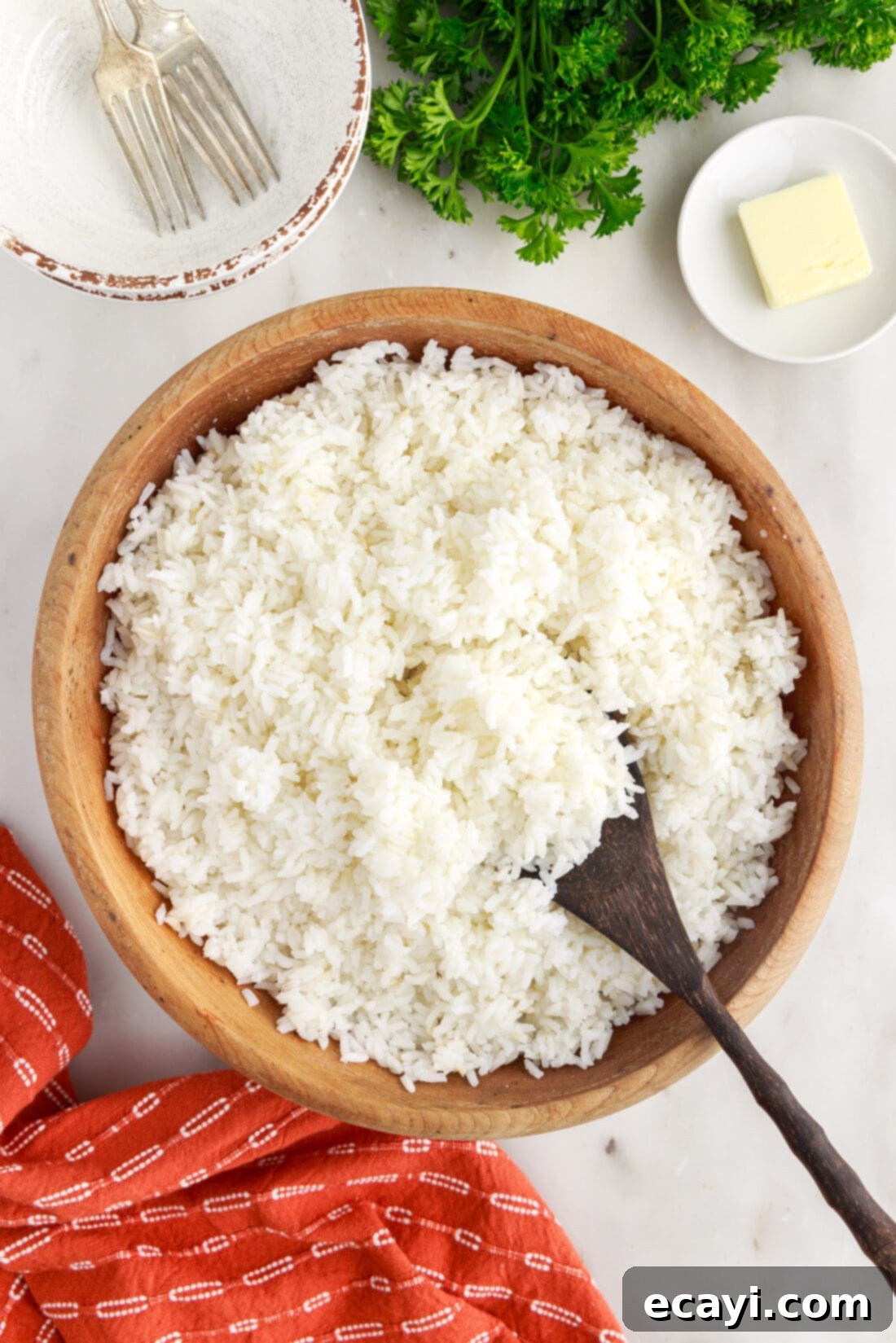
Serving Suggestions for Your Perfect Stovetop Rice
Once you’ve mastered these stovetop rice methods, a world of culinary possibilities opens up! Perfectly cooked rice is an incredibly versatile side dish that can accompany almost anything. Serve it alongside flavorful mains like General Tso chicken or orange chicken, where it will beautifully soak up the delicious sticky sauces. While rice is a cornerstone of Asian cuisine, it’s far from limited to it.
Consider using your fluffy rice as a base for vibrant grain bowls, a hearty filler for burritos and tacos, or as an essential component in comforting soups and stews. It’s also fantastic for stuffing vegetables like stuffed peppers, or as a fresh addition to spring rolls and summer rolls. Don’t hesitate to get creative with your seasonings too! A sprinkle of fresh herbs, a dash of soy sauce, a squeeze of lime, or a touch of toasted sesame oil can transform simple white rice into a side dish that truly shines.
We truly hope this detailed tutorial empowers you to conquer the art of stovetop rice cooking. With these two foolproof methods and our expert tips, you’ll soon find yourself consistently yielding tender, fluffy white rice that forms the perfect foundation for any meal, every single time. Say goodbye to guesswork and hello to perfectly cooked rice!
More Delicious Rice Recipes to Explore
If you’re eager to expand your rice repertoire beyond plain white rice, here are some fantastic recipes that highlight the versatility of this incredible grain:
- Dirty Rice: A flavorful Southern classic packed with spices and meats.
- Chicken Fried Rice: A quick and satisfying one-pan meal, perfect for using leftover rice.
- Classic Spanish Rice: A vibrant and savory rice dish, often served with Mexican or Latin American cuisine.
- Chicken Broccoli Rice Casserole: A comforting and hearty casserole, ideal for family dinners.
- One Pot Vegetable Rice Soup: A wholesome and easy-to-make soup that’s perfect for a light meal.
I love to bake and cook and share my kitchen experience with all of you! Remembering to come back each day can be tough, that’s why I offer a convenient newsletter every time a new recipe posts. Simply subscribe and start receiving your free daily recipes!
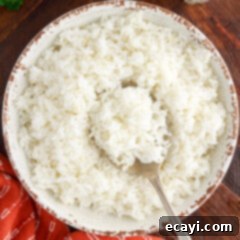
How to Make Rice on the Stovetop
IMPORTANT – There are often Frequently Asked Questions within the blog post that you may find helpful. Simply scroll back up to read them!
Print It
Pin It
Rate It
Save ItSaved!
Ingredients
- 1 cup long grain white rice
- 1 ½ cups water
- 1 pinch salt
- 1 Tablespoon salted butter optional
Things You’ll Need
-
Medium Saucepan with Tight-Fitting Lid
-
Fine Mesh Strainer
-
Fork for fluffing
Before You Begin & Expert Tips
- When using the **steaming method**, ensure you have enough room in your saucepan to prevent boil-over. Remember that 1 cup of dry rice expands to about 3 cups of cooked rice. While simmering, ensure your burner is truly on its lowest setting to prevent scorching.
- The **pasta method** is incredibly forgiving regarding water measurements. You are essentially boiling the rice, so don’t worry about exact ratios, just ensure the rice is submerged by 2-3 inches. If the water level gets low, add more and continue boiling. The excess starch will be rinsed away after cooking, resulting in light and fluffy rice.
- This recipe is specifically developed for long-grain white rice. Cooking times and water amounts will vary for other rice varieties (e.g., brown rice, wild rice, short-grain rice).
- For the **steaming method**, rinsing the rice until the water runs clear is highly recommended. Our tests showed significantly fluffier and more evenly cooked rice when pre-rinsed. For the **pasta method**, pre-rinsing is optional as the boiling and final rinse effectively remove starch, but it does no harm if you choose to do so.
- Store any leftover cooked rice in an airtight container in the refrigerator for 4-5 days. It can also be frozen for up to 3 months. When reheating, add a splash of water and heat thoroughly.
Instructions
Steaming Method for Fluffy Rice
-
Rinse rice under cold running water in a sieve until the water runs completely clear; drain well.
-
Place the rinsed rice, measured water, a pinch of salt, and optional butter into a medium saucepan with a tight-fitting lid.
-
Bring the contents to a low boil over high heat. As soon as small bubbles appear and the rice begins to simmer, proceed immediately to the next step.
-
*Expert Tip: The cook time may vary slightly depending on your pan type and stovetop. Ensure your burner is turned down to the lowest possible setting to prevent the rice from scorching on the bottom of the pan.*
-
Reduce the heat to low, cover the pot tightly with the lid, and simmer for 15 minutes without lifting the lid. After 15 minutes, briefly check to ensure all liquid has been absorbed. If not, simmer for an additional 1-2 minutes until tender.
-
Turn off the heat. Leave the pot covered and allow the rice to rest for 10 minutes to finish steaming and ensure even moisture distribution. Do not lift the lid during this crucial resting period.
-
Remove the lid, gently fluff the rice with a fork to separate the grains, and serve hot.
Pasta Method for Ultra-Fluffy Rice
-
Place rice and a pinch of salt in a medium to large saucepan. Add water to generously cover the rice by 2-3 inches (no precise water measurement needed for this method).
-
Bring the rice and water to a vigorous boil over medium-high heat.
-
Once boiling, set a timer for 15 minutes and continue to boil until the timer is complete. Stir occasionally to prevent sticking.
-
Check the rice for doneness by tasting a few grains. It should be tender but still have a slight bite. Boil for another minute or two if needed.
-
Pour the rice and water through a fine mesh sieve. Rinse the cooked rice thoroughly under cold running water to wash away excess starch, then drain completely, shaking out any remaining water.
-
Transfer the drained rice back to the empty saucepan or a serving bowl. Season with butter, salt, or any other flavorings you prefer. Fluff with a fork and serve immediately.
Nutrition Information
The recipes on this blog are tested with a conventional gas oven and gas stovetop. It’s important to note that some ovens, especially as they age, can cook and bake inconsistently. Using an inexpensive oven thermometer can assure you that your oven is truly heating to the proper temperature. If you use a toaster oven or countertop oven, please keep in mind that they may not distribute heat the same as a conventional full sized oven and you may need to adjust your cooking/baking times. In the case of recipes made with a pressure cooker, air fryer, slow cooker, or other appliance, a link to the appliances we use is listed within each respective recipe. For baking recipes where measurements are given by weight, please note that results may not be the same if cups are used instead, and we can’t guarantee success with that method.
